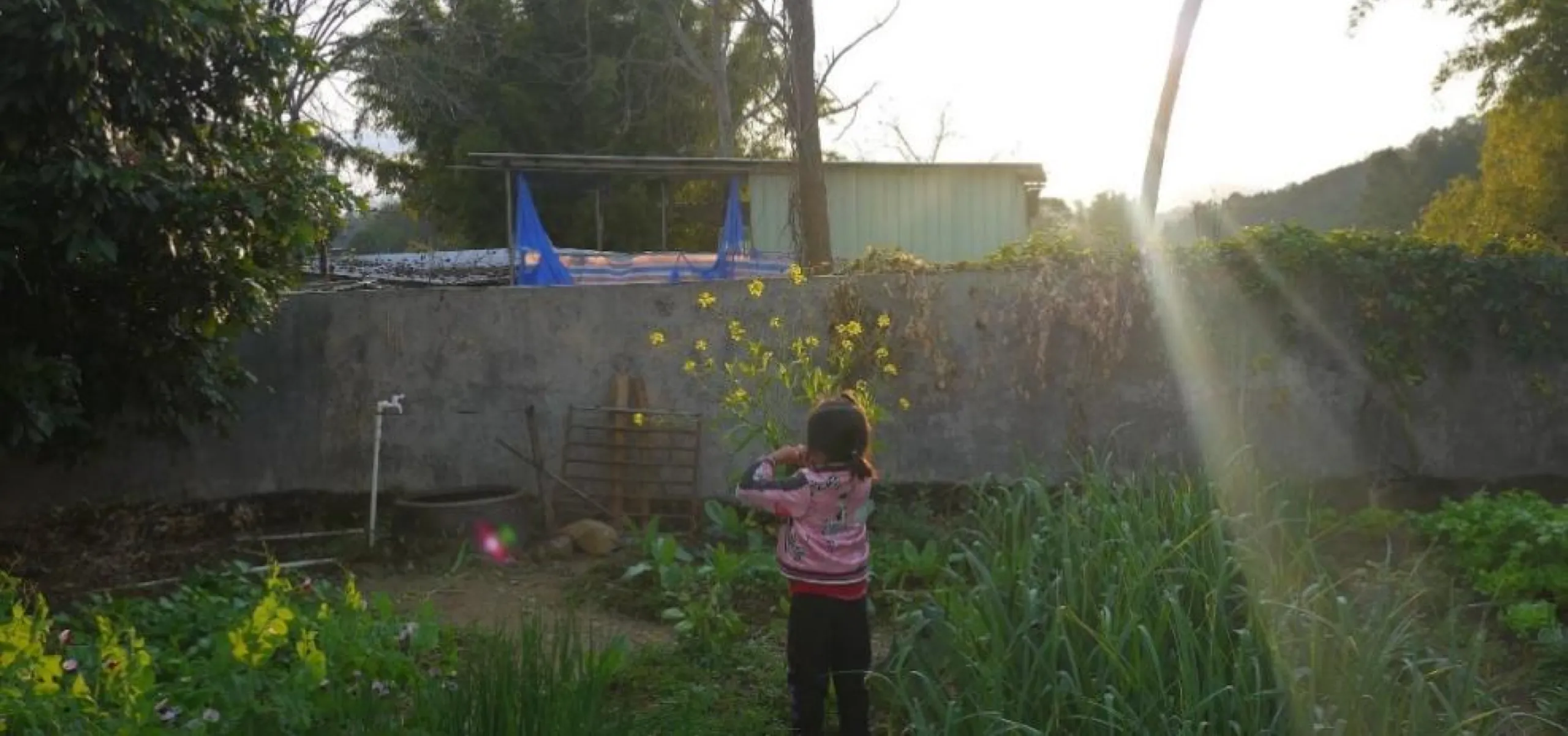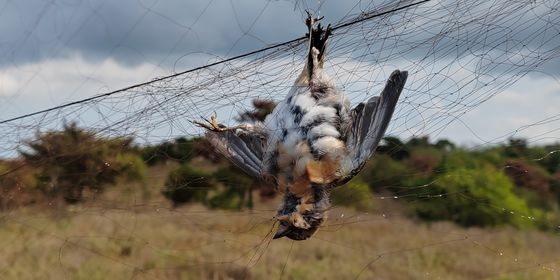A six-month stay in a Chinese village helped a family return to their roots
After the Lunar New Year of 2020, I was detained in my home village for several months. I lost my job to the pandemic and my children’s kindergarten suspended classes. I was constantly bombarded with bad news from the internet: the human toll of the pandemic, the hardships of my compatriots on the front lines, the laments of survivors. I could only cope by focusing on what was in front of me. I hadn’t spent this much time in the village since before my college days.
My ancestral home is a small village in northeastern Guangdong. A minor provincial road passes through it; the county seat is a dozen kilometers south, and further south is the Pearl River Delta. Our neighbor to the north is Jiangxi, home to a population of Hakka people. There are more hills than fields, so the villagers rely on the mountains for much of their subsistence. Starting in the ’90s, many able-bodied youths left for cities like Guangzhou and Shenzhen to work as laborers. After the turn of the millennium, they started buying homes in the city and moved away for good. Now, there were only a handful of older people and children left in the village.
In the past few years, I’ve gone back to my home village every Lunar New Year. Though the ordinary routines were withering away, the village staged a remarkable revival during the festival. People would come back from the cities to pay respects to their ancestors and visit relatives. The air came alive with their stories.
Over the course of this long stay during the pandemic, I started recording the mundane details of life here—every blade of grass and stick of wood. This experience rewarded me with the ability to see my home village through new eyes.
1 / 8
In the days leading up to Lunar New Year’s Eve in 2020, my husband and I took our two kids back to the main town of our home county, preparing to celebrate the holiday there before returning to the city for work and school. When the pandemic broke out, we had to quarantine in an apartment we owned there. Our children quickly exhausted their entertainment options and kicked up a fuss, begging all day to go out. Finally, we decided to go to the countryside, to my parents’ village.
There weren’t many cars on the road. When we passed the highway checkpoint, workers in hazmat suits reached into our car with thermometers. As we merged onto the provincial road and then the narrower county road, there was no trace of the festive atmosphere of years past. We only saw the occasional group of people gathered under the eaves of houses to sun themselves and chat, as well as giant red banners with anti-epidemic slogans.
The third day of our return, a village cadre came door-to-door with pamphlets, informing us that starting that same day, relatives and workers from the outside would be forbidden from entering the village. This announcement sealed off the village from the rest of the world. Every day, rain or shine, a doctor would come take the temperatures of a family that had returned from Hubei province, then the center of the pandemic. I tried to describe the pandemic to my daughter, giving her a sense of the historic moment we were part of.
We were lucky enough to have been able to return to the village after a week of quarantine in our apartment, and renew our intimacy with the sun. From the morning they stepped out onto the soil, my 5-year-old daughter Yang and my 2-year-old son Zhun were as joyful as birds freed from their cages.
After a couple weeks, my husband and my younger siblings went back to work in the city, leaving me and the two children to our slow country life.
The village didn’t offer much in the way of entertainment, but the children were rarely bored. On clear days, they could occupy themselves with a pebble and a head of cauliflower. When it rained, they could turn a puddle into a stage for reenacting scenes from Peppa Pig.
Whenever we came back from a visit, my parents were usually the only ones at home; the rest of the village inhabitants were also old people their age. But even this quiet winter village had its own soundscape. Every morning at first light, we opened our eyes to the rooster’s crow. The morning sun would scatter its honeyed light across the courtyard. After the kids had their breakfast, they would run out to the clearing behind the house to feed the chickens.
The chickens would forage among the dry grasses in that early dawn light. Instead of inciting alarm, the children’s arrival would produce a crescendo of clucking. A few ducks sat peacefully behind their wire netting, as if savoring the sunlight. Yang told her brother, “Did you know they’re asking their mom and dad if they can go swimming?” Hearing this, the adult ducks would quack knowingly.
On our way back from the fields, we would pass a wooden ladder propped against the corner of the wall. After inching her way to the top of the wall, my daughter yelled, “Mom, I see a flower garden!”
Actually, it was my mother’s vegetable garden. Modest in size, it had all the common winter vegetables: yellow cress, radishes, peas, mustard greens, garlic greens, scallions, leaf lettuce… At lunch, when my mother went to pick vegetables, she would trim up a lettuce core for Yang. This was a coveted treat from my childhood of scarcity, but my daughter had never acquired a taste for its clean vegetal flavor, so she cast it aside after a single taste. Kohlrabi, daikon, and vegetable stalks could all be eaten raw, the flavor unforgettably transformed by the biting cold.
I taught Yang the names of the vegetables, in both Mandarin and our local dialect. For example, villagers would call the lush patch of mint by the garden gate fenchen. “Fenchen with duck” was a prized dish from my youth. Yang parted the radish leaves, exposing a sliver of white. She squealed, “Radish!” (Yang loves eating radish.) The cabbages also attracted her attention. My mother loved to plant cabbages—perhaps it was the sense of accomplishment from growing a large, handsome head.
The king of winter vegetable pairings was celery with garlic greens. They worked well with all kinds of meat, and were excellent stir-fried with slices of cured pork belly. Celery was also the soul of the soup we made the morning of New Year’s Eve: a chicken and shiitake porridge simmered over a wood fire. For Yang, these vegetables had not yet taken on this layer of meaning. Her recognition was limited to whether she had tried something before. She had eaten goji soup, so she could identify goji berries, and peas were more familiar still—not only did we eat them often, but she also knew them from “The Princess and the Pea.” This time, she learned their vernacular name, xuedou (snow pea). At the time, the snow peas were producing flushes of flowers: “Wherever there was a flower, there’d be a pea.”
In the afternoon, we discovered two dried-out luffas by the garden wall. I told Yang: “When the luffa is still young, it’s tasty stir-fried or boiled in soup.” I picked an old luffa and found a wooden stick, shattering the exterior to expose its snow-white fibers. The intertwined meridians look almost like a dense neural net—nature’s wondrous creation. I slowly peeled away the dried flesh at one end, exposing a few small holes. Streams of white seeds came pouring out. My two little ones scrambled to catch them in their palms, but their hands quickly overflowed.
Almost without thinking, they started putting the luffa seeds in their mouths. I suggested, “Let’s put the seeds in a bag. We can plant them tomorrow.”
The next day after breakfast, Yang wanted to plant the seeds. I found a hoe in the storage room and took her to a nearby patch of soil. I cleared away the weeds and dug a small hole. She planted and covered the seeds before fetching some water from the spigot and watering the soil.
We returned brimming with anticipation for the sprouts, flowers, and fruits to come.














